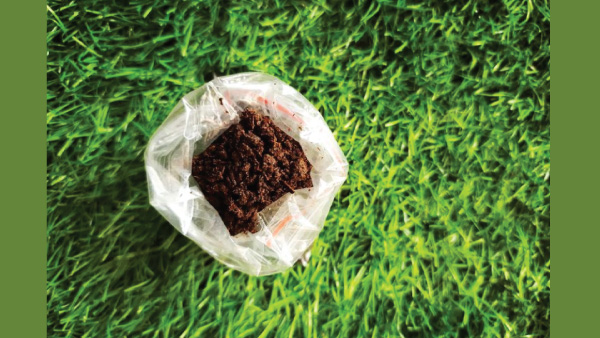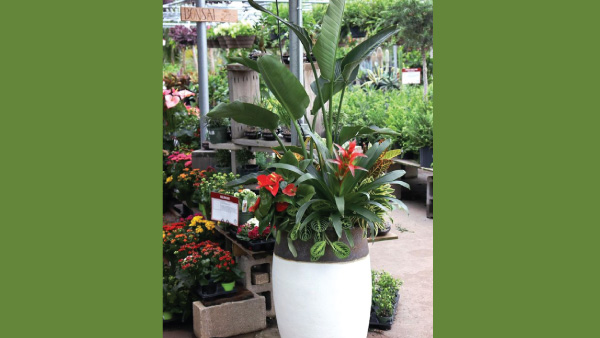Just In
- 1 hr ago

- 2 hrs ago

- 6 hrs ago

- 11 hrs ago

Don't Miss
- Technology
 Realme Narzo 70 and Narzo 70x Set To Launch Together on April 24 – Check Price, Specs
Realme Narzo 70 and Narzo 70x Set To Launch Together on April 24 – Check Price, Specs - Movies
 Bade Miyan Chote Miyan Fame Manushi Chhillar To Attend Cannes 2024 In This Look, Spills Beans On Sexy Outfit
Bade Miyan Chote Miyan Fame Manushi Chhillar To Attend Cannes 2024 In This Look, Spills Beans On Sexy Outfit - Education
 NBSE Nagaland board HSLC, HSSLC result 2024 to be released on April 26 at nbsenl.edu.in, Know more
NBSE Nagaland board HSLC, HSSLC result 2024 to be released on April 26 at nbsenl.edu.in, Know more - Finance
 Gold Price India: 24K Of 100 Grams Gold Falls By Rs 15,300 Today, Biggest Dip In April
Gold Price India: 24K Of 100 Grams Gold Falls By Rs 15,300 Today, Biggest Dip In April - News
 Karaga Mahotsava Traffic Advisory In Bengaluru: Check Route Plan And Restrictions
Karaga Mahotsava Traffic Advisory In Bengaluru: Check Route Plan And Restrictions - Automobiles
 Bajaj Pulsar 400 Teaser Out – Launch Date & Other Details
Bajaj Pulsar 400 Teaser Out – Launch Date & Other Details - Sports
 Mumbai Indians Playoffs Scenario: Can MI Still Finish in Top 4 in IPL 2024 Points Table After Defeat to RR?
Mumbai Indians Playoffs Scenario: Can MI Still Finish in Top 4 in IPL 2024 Points Table After Defeat to RR? - Travel
Kurnool's Hidden Gems: A Guide To Exploring India's Lesser-Known Treasures
6 Ways to Prevent House Plants From Gettiṇg Burnt In The Summers
During the summers, unbearable heat and extreme temperatures can cause a lot of damage to house plants. Every type of plant responds differently to varying heat and temperatures. Vegetables like lettuce, cabbage, leafy greens, and broccoli generally prefer cooler soil temperatures around 50 to 60℉.Whereas summer garden crops like tomatoes, peppers, nd beans thrive in 75 to 90℉. It is always suggested to have long-term solutions to combat irregular heat fluctuations during summers that are harmful to the life of plants.
You can be a good gardener for your plants by taking necessary precautions. Given below are 6 ways that will help to prevent your plants from drying or getting burnt in the summers.

1. Water with care
To protect your plants from excess heat it is necessary to develop a healthy and strong root system by watering them daily. The moist soil encourages the roots to grow deeply. Having deep roots will help the plant to access more nutrients to make them resilient during the unbearable summer heat. The goal is to keep the soil damp with a consistent watering schedule.

2. Shade sensitive plants
Providing shade is an effective way to keep your plants cool by reducing the intensity of sunlight. Shade can prevent sun scalding of plants that often causes the plant to prematurely rot. It is, therefore, necessary to block the hottest afternoon sun by draping specialized shade cloth over hoops or covering the plants with the help of a large overhead canopy. In the case of permanent shade structures, use a material that will allow partial sunlight with UV protection. For a shorter span, you can block the sun by moving your potted plants in shaded areas.

3. Do not water the leaves
Avoid overhead watering and wetting of plant leaves during hot and sunny conditions. Watering the plants in direct sunlight can magnify the intensity of heat by increasing the chances of sunburn or leaf scorching, wherein the leaves turn brown and ultimately drop off from the plant. It is always suggested to water the soil around the base of the plant rather than its leaves during summer times.

4. Avoid fertilizers
Applying additional fertilizers to your plants is not a great idea during summers. Manure and fertilizer contain salts that can cause damage and burning of the plants. When your plant is in summer survival mode, it is not looking out for additional nutrients. Wait till the summer cools down, to add extra fertilizers into the soil.

5. Do not skip the mulch
Mulch is a layer of material that goes above-exposed soil which helps to promote steady soil temperature. Mulching helps in reducing the amount of water a plant requires by preventing the soil from drying out. Applying two inches of organic mulch material like straw, small barks, or shredded leaves serves the best during summers.

6. Avoid dark containers
Growing your plants in dark-colored containers will heat up the soil during summers. It is suggested to use lighter color containers, as they help in reflecting the heat. It is a vital responsibility of the gardener to be well aware of the effects of weather on plants.
-
 yoga spiritualityMaha Shivratri 2024: Bring Lord Shiva's Favourite Plants Home To Garner His Blessings
yoga spiritualityMaha Shivratri 2024: Bring Lord Shiva's Favourite Plants Home To Garner His Blessings -
 home n garden10 Winter-Resilient Flowering Plants for Your Garden That Will Turn Your Outdoor Space Into Vibrant Heaven
home n garden10 Winter-Resilient Flowering Plants for Your Garden That Will Turn Your Outdoor Space Into Vibrant Heaven -
 healthThese Plants Are Helpful To Control Indoor Air Pollution And Boost Lung Health
healthThese Plants Are Helpful To Control Indoor Air Pollution And Boost Lung Health -
 home n garden7 Effective Hacks To Care For Your Houseplants That Will Transform Your Green Friends For Better
home n garden7 Effective Hacks To Care For Your Houseplants That Will Transform Your Green Friends For Better -
 home n gardenYear Ender 2023: Which Plants To Grow In New Year 2024 As Per Your Zodiac Sign
home n gardenYear Ender 2023: Which Plants To Grow In New Year 2024 As Per Your Zodiac Sign -
 home n gardenGreen Sanctuary: 10 Indoor Plants To Bring Tranquility To Your Bedroom
home n gardenGreen Sanctuary: 10 Indoor Plants To Bring Tranquility To Your Bedroom -
 home n garden6 Creative Ways To Decorate Your Home On Tight Budget, The Result Is One-Of-A-Kind!
home n garden6 Creative Ways To Decorate Your Home On Tight Budget, The Result Is One-Of-A-Kind! -
 home n gardenYou Can Sow These Flowering Plants In September And They Will Remain Till Diwali
home n gardenYou Can Sow These Flowering Plants In September And They Will Remain Till Diwali -
 home n garden8 Creative Ways To Decorate Your Home With Plants
home n garden8 Creative Ways To Decorate Your Home With Plants -
 home n garden6 Effective Tips To Make Your Home Smell Amazing
home n garden6 Effective Tips To Make Your Home Smell Amazing -
 home n gardenMonsoon 2023: 9 Simple Tips And Tricks To Take Care of Your Plants
home n gardenMonsoon 2023: 9 Simple Tips And Tricks To Take Care of Your Plants -
 home n garden5 Ways To Add An Organic Touch In Your Home
home n garden5 Ways To Add An Organic Touch In Your Home


 Click it and Unblock the Notifications
Click it and Unblock the Notifications



